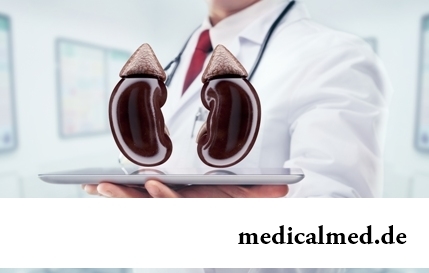





Dextrose
Application instruction:
Dextrose – means of carbohydrate food.
Form of release and structure
- Isotonic solution for infusions of 5%: transparent, colourless (on 100 ml in bottles or bottles, in a cardboard pack 1 bottle);
- Hypertonic salt solution for infusions of 10%: transparent, colourless (on 100 ml in bottles or bottles, in a cardboard pack 1 bottle).
Active ingredient: a dextrose, in 100 ml of solution – 5 or 10 g.
Excipients: acid solution hydrochloric, water for injections.
Indications to use
- Insufficiency of carbohydrate food;
- Hypoglycemia;
- Toxicoinfection;
- Intoxication;
- Dehydration (owing to diarrhea, vomiting, in the postoperative period);
- Intoxications at liver diseases (hepatitis, an atrophy and dystrophy of a liver, including a liver failure);
- Collapse;
- Hemorrhagic diathesis;
- Shock.
Also the Dextrose is applied to preparation of solutions of medicines for intravenous administration, used as a component of various antishock and blood-substituting liquids.
Contraindications
Absolute:
- Fluid lungs;
- Overhydratation;
- Hyperglycemia;
- Giperosmolyarny coma;
- Hyper lactacidemia;
- Wet brain;
- Acute left ventricular failure;
- Postoperative disturbances of utilization of glucose;
- Hypersensitivity to drug.
Relative:
- Hyponatremia;
- Dekompensirovanny heart failure;
- Diabetes mellitus;
- Chronic renal failure (oliguria, anury).
Route of administration and dosage
The dextrose is intended for intravenous administration, drop or jet.
Kapelno 5% enter solution with a speed no more than 7 ml/minute (400 ml an hour) in a daily dose for adults to 2000 ml; 10% solution – with a speed no more than 3 ml/minute in a daily dose for adults to 1000 ml.
By Struyno appoint 10% of solution on 10-50 ml.
At purpose of parenteral food to adult patients with a normal metabolism the most admissible daily dose of the Dextrose makes no more than 4-6 g/kg (i.e. about 250-450 g/days), administer the drug with a speed of 0,25-0,5 g/kg/h. If metabolic rate decreases, the dose is reduced to 200-300 g and entered with a speed of 0,125-0,25 g/kg/h. The daily volume of the liquid entered at the same time has to make 30-40 ml/kg.
To children as parenteral food the Dextrose is entered (on an equal basis with fats and amino acids): in the first day – 6 g/kg/days, further – to 15 g/kg/days. When calculating a dose of drug at introduction of 5% and 10% of solutions it is necessary to consider the admissible daily volume of the entered liquid: children with the body weight of 2-10 kg – 100-165 ml/kg, children weighing 10-40 kg – 45-100 ml/kg. The most admissible rate of administering – 0,75 g/kg/h.
Side effects
- Fever;
- Disturbance of water and electrolytic balance;
- Hypervolemia;
- Hyperglycemia;
- Acute left ventricular failure;
- Local reactions: thrombophlebitis, infection.
Special instructions
Sick diabetes mellitus the dextrose should be entered under control of its content in urine and blood.
For good assimilation of the dextrose entered in high doses insulin at the same time can be appointed: 1 PIECES on 4-5 g of a dextrose.
Medicinal interaction
When the Dextrose is combined with other medicines, it is necessary to control their pharmaceutical compatibility visually.
Terms and storage conditions
To store at a temperature of 5-20 ºС in protected from light, the place, dry, unavailable to children.
Period of validity – 3 years.
Except people, only one living being on the planet Earth – dogs suffers from prostatitis. Here really our most loyal friends.

There comes the season of issues. Many Russians already dream of outdoor recreation, trips, beautiful seaside beaches....
Section: Articles about health
Impossibility to conceive the child – a trouble of many Russian families. During quite long time was considered that main "culprits" of troubles such are women. Modern physicians claim that the situation is different: about a half of failures at...
Section: Articles about health
Dark circles (bruises) under eyes – a shortcoming with most of which often fight against the help of cosmetics (proofreaders, saloon procedures and so forth), eliminating only its visibility. However, according to doctors, skin around eyes – the indicator of many disturbances in an organism. To reveal them at early stages, without having disguised bruise, and having addressed its reasons – a task of each person who is regularly finding under with own eyes dark stains. Early detection and elimination of the disease lying in wasps...
Section: Articles about health
The fatigue, sleep debt, disturbances of food, bad mood, vagaries of the weather – all these circumstances badly are reflected in our vn...
Section: Articles about health
Water with a lemon - idle time in preparation drink which supporters of a healthy lifestyle already managed to appreciate. Used in a warm look and on an empty stomach, it is one of the most useful prophylactics allowing to prevent tens з...
Section: Articles about health
The phenomenon of improvement of a condition of the patients at administration of drugs who are not containing active agents, so-called effect of placebo is known long ago. At the end of the 18th century the American doctor Perkins began to treat people the "miracle" sticks made of alloy of steel and brass. Was for several minutes to press such subject enough to a sore point that it became much easier for the patient. Having suspected Perkins of charlatanism, his colleagues tried to repeat "miracle" by means of sticks, steles...
Section: Articles about health
High temperature - a frequent symptom of such widespread diseases as a SARS, quinsy, pneumonia, etc. To reduce heat, облег...
Section: Articles about health
Smoking not only exerts a negative impact on the state of health of the consumer of tobacco products, but is an air polluter the substances potentially dangerous to people around. In recent years significantly the number of people, стремящ increased...
Section: Articles about health
Sooner or later hair turn gray at all. Many people try to hide these changes, returning natural color of the hair by means of coloring, or considerably changing it for the purpose of creation of absolutely new image. All know that the gray hair is a sign of the coming old age, so, it is necessary to get rid of it....
Section: Articles about health
Small appetite at the child – the complaint which pediatricians should hear practically from each mother. Most often it is carried to разр...
Section: Articles about health
Kidneys perform the most important function of clarification of blood from those products of metabolic processes which cannot be used by an organism for obtaining energy and construction of new cells. With the urine produced by kidneys from a body of the person bulk is removed...
Section: Articles about health
Such trouble as the milkwoman's attack, at least once in life happened almost to each woman. Prevalence of a disease is explained by the fact that the causative agent of an illness belongs to the so-called opportunistic microflora living on mucous membranes of any human body and which is becoming more active only under favorable conditions. If you had curdled allocations from a vagina, the itch and burning in external genitals, or painful feelings disturb at sex...
Section: Articles about health
Iodine - one of thirty most important microelements in our organism. The main role of iodine consists in synthesis thyroid гормо...
Section: Articles about health
Helminthosis is one of the most widespread diseases. Statistically, any species of helminths infected every third inhabitant of the planet. Most of specialists even consider these data strongly underestimated: some uninvited "cohabitants" of N...
Section: Articles about health
Life expectancy in various regions of Earth is not identical. Social stability, economic wellbeing, availability and level of medical care, household comfort, literacy of the population in the field of respect for sanitary and hygienic norms and many other factors exert impact on it. However one parameter remains to the general almost for all countries of the world: women on average live for 7-10 years longer, than men. Today we will talk about the reasons of this phenomenon....
Section: Articles about health
Feeding by a breast - the integral part of ideal motherhood allowing to come into contact with the kid and to create since early years...
Section: Articles about health
The way of life of people promptly changes from year to year: if about ten years ago the personal computer was not in each family, then today already very few people do without this device. Certainly, and children master the computer at full speed: they not only I play...
Section: Articles about health
The metabolism at each person proceeds in own way. However between the speed of this process and disposal of excess weight after all all have a dependence. Unfortunately, the people inclined to try on itself numerous "miracle" diets, not always consider this circumstance and with the most resolute intentions begin to eat so that artificially slow down the metabolism instead of to accelerate it. Except quite clear disappointment, incorrectly picked up systems...
Section: Articles about health
Producers of milk mixes for children assure: mixes are ideally balanced and adapted for needs of babies. In a sluch...
Section: Articles about health
About influence of fasting days on an organism it is told much – both about advantages, and about shortcomings. It is considered that fasting day in the form of a short-term monodiet is useful, promoting effective removal of slags from an organism whereas irregular, it is excessive п...
Section: Articles about health
The dietology, as well as other sciences, does not stand still. Food stuffs are exposed to comprehensive study, and scientists obtain new information on their properties and influence on a human body. Unfortunately, this reasonable and natural process gives unpleasant side effect from time to time: some types of food periodically declare "harmful" or even "deadly" without the bases, sufficient on that....
Section: Articles about health
Contrary to popular belief, the multiple sclerosis (MS) is not connected neither with sclerous changes of walls of vessels, nor about age...
Section: Articles about health
It is pleasant to state a possibility of improvement of quality of life of people with problems of functioning of secretory system. Efforts of talented inventors created products which will be able to provide normal life activity of clients with moderate degree for...
Section: Articles about health
Each of us repeatedly noticed that the people having the same passport age are sometimes not similar on one-years at all. One at the age of 40-45 years already looks almost an old man, and another and in 60 is young, vigorous and full of life. The matter is that the condition of our health depends not on the number of the lived years, and on degree of safety of an organism. This factor also defines biological age of the person....
Section: Articles about health
Aging — natural and inevitable process. Over time our skin loses elasticity, on it saggings, a face form теря are formed...
Section: Articles about health
Cold, puffiness of a nose, itch, the watering eyes - characteristic symptoms of the allergic rhinitis resulting from hit of allergens (pollen, house dust, hair of animals, etc.) on a mucous membrane of a nose. Unpleasant feelings often deliver беспоко...
Section: Articles about health
What they, women? Beautiful, gentle, passionate and at the same time windy, gusty, and nervous. And what is stranger: have all these qualities of the woman at the same time. But here only the mood their time sharply changes on completely opposite: in the morning they laugh and joke, and in the evening cry or are irritated....
Section: Articles about health
